Nestled between the Sava and Danube Rivers, Belgrade, the capital of Serbia, is a Balkan city that seamlessly blends history with modern culture. The city’s name comes from the Slavic words beo (white) and grad (city), referring to the striking white limestone of the Belgrade Fortress, which once served as a beacon visible from miles away.
Archaeological evidence suggests that Belgrade has been continuously inhabited since the Neolithic period (around 5,000–6,000 BCE), making it one of Europe’s oldest cities. Its strategic location in Eastern Europe made it a highly contested stronghold for empires ranging from the Romans to the Ottomans, each leaving its mark on its culture, architecture, and traditions.
Today, the city showcases a fascinating blend of eclectic architecture, remnants of its Communist past, and a thriving modern identity. Belgrade is renowned for its lively nightlife, innovative gastronomy, and affordability—making it a favorite among digital nomads, retirees, and budget-conscious travelers. For example, the cost of living in Belgrade is about 40% lower than in Paris, positioning it as one of Europe’s most attractive hidden gems.
The World’s Best Retirement Havens for 2026
The World’s Best Retirement Havens for 2026
24 Countries Compared, Contrasted, Ranked, and Rated. You don’t have to be rich to enjoy a pampered retirement, you just need to know where to go. With our 35th Annual Global Retirement Index, our experts hand you a detailed roadmap. Details—and a Special Offer—Here

By submitting your email address, you will receive a free subscription to IL Postcards, The Untourist Daily and special offers from International Living and our affiliates. You can unsubscribe at any time, and we encourage you to read more about our Privacy Policy.
Getting There
Located about 11 miles (18 kilometers) from the city center, Belgrade Nikola Tesla Airport (BEG) serves as the city’s international gateway, named after the visionary Serbian-American scientist Nikola Tesla. Train travel is another option, as Belgrade’s central railway station connects Serbia with Hungary, Croatia, Bulgaria, and other neighboring countries.
It’s important to note that Serbia is not part of the Schengen Zone, so travelers should have their passports ready when entering the country and allow extra time for passport control procedures.
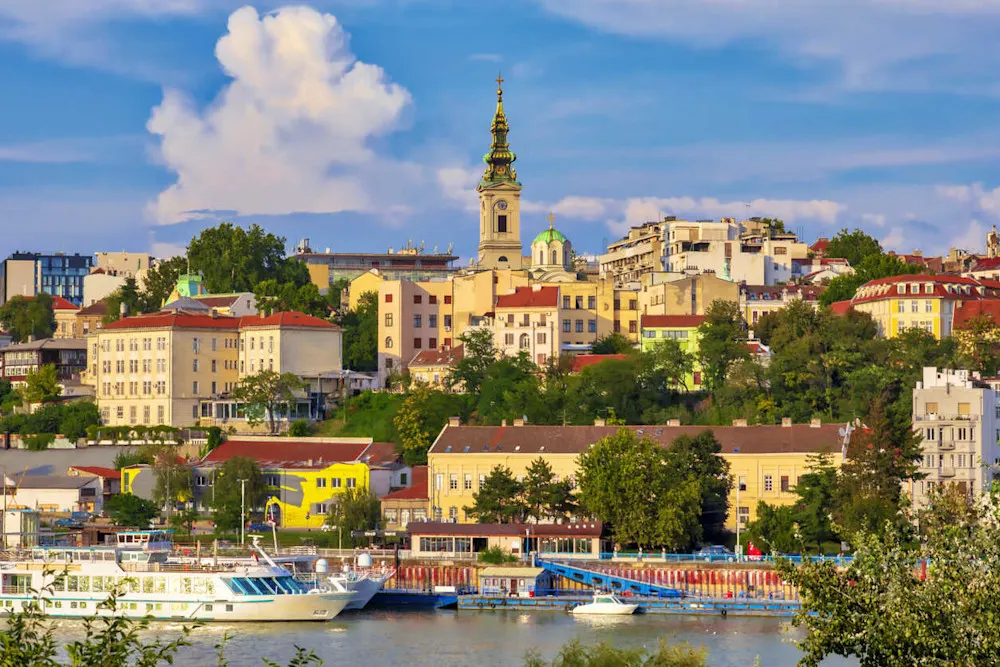
When to Go
The summer months (June to August) are a popular time to visit, as riverside cafés come to life and the city’s famous nightlife is in full swing. Spring (March to May) is another great option, when Belgrade’s 65+ parks and green spaces burst into bloom.
For a more relaxed experience, consider visiting in fall (September to November) when the city’s foliage transforms into brilliant autumn colors and the temperatures are cool yet pleasant.
Winter (December to February) has its own charm, but temperatures typically range from 28 F to 43 F (-2 C to 6 C). Despite the cold, Belgrade’s festive atmosphere, cozy cafés, and winter markets make it an inviting destination year-round.
How to Get Around
Getting around Belgrade is easy, thanks to its extensive public transportation system, which includes buses, trams, and trolleybuses. Taxis are widely available, but to avoid overpaying, ensure they are registered and use a meter. Ride-hailing apps like CarGo and Yandex-Go offer a convenient way to book licensed vehicles.
For a more leisurely experience, walking is an excellent option. The city center is compact and pedestrian-friendly, allowing visitors to take in the vibrant atmosphere at their own pace.
Where to Eat
Serbian cuisine is influenced by Balkan, Mediterranean, and Central European flavors, and Belgrade’s culinary scene adds a modern international twist.
A visit to a kafana (a traditional Serbian tavern) is a must, where visitors can enjoy hearty local dishes like ćevapi (grilled minced meat rolls), pljeskavica (Serbian-style burger), and sarma (cabbage rolls stuffed with meat and rice). These meals are often accompanied by rakija, a potent fruit brandy that is a staple of Serbian hospitality.
For a traditional meal in a historic setting, visit Dva Jelena (Two Deer) in Skadarlija, a restaurant known for its sprawling dining halls, terraces, and hidden rooms. Another local favorite is Stara Hercegovina, which specializes in hearty portions of traditional Serbian and Hercegovinian dishes. Their raštan (a local cabbage-family plant cooked with meat) and goat cheese with potatoes are must-tries.
For a modern take on Serbian cuisine, head to the Savamala district, where trendy restaurants and cafés offer creative reinterpretations of traditional recipes. Many top restaurants are located in Beton Hala, an area along the Sava River offering waterfront dining.
For fine dining, visit Michelin-starred Salon 1905, where the turn-of-the-century landmark building enhances the sophisticated, internationally influenced menu.
For a laid-back, Bohemian vibe, Dorćol is a great neighborhood for bars, cafés, and relaxed eateries. Drip Specialty Coffee and Sloj are excellent spots for quality coffee and people-watching.
From historic fortresses to open-air markets, Belgrade offers something for every type of visitor. Below are some of the must-see attractions in Serbia’s capital city.
Six Must-See Things in Belgrade
1. Stroll Through Kalemegdan Fortress
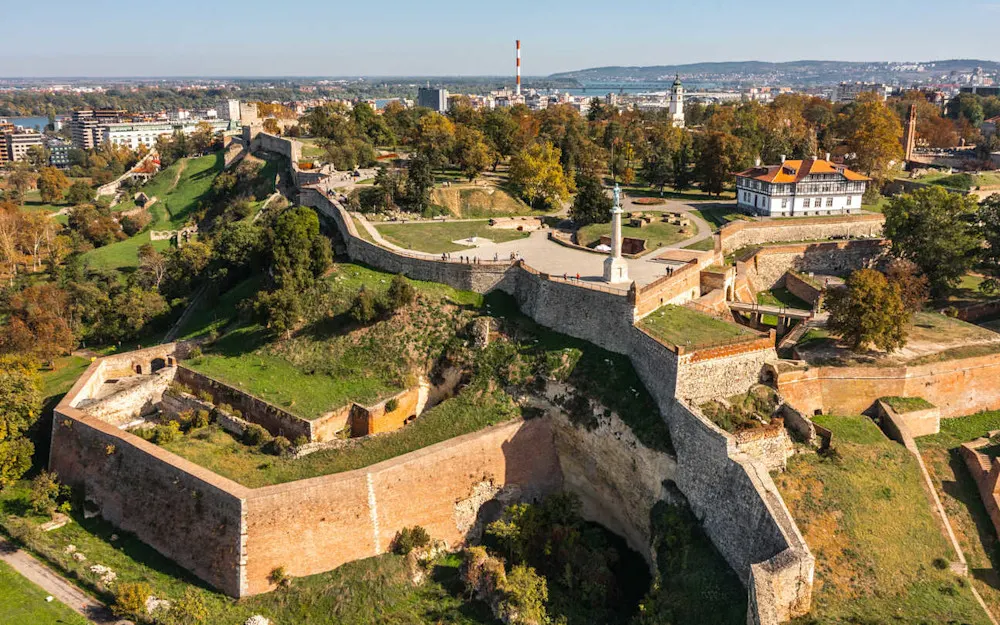
Located in the heart of Belgrade, this sprawling historical complex was originally built by the Romans in the 2nd century and has served as a strategic military stronghold for centuries, passing through Byzantine, Ottoman, and Austrian rule. Its walls have witnessed major battles, from the Siege of Belgrade in 1456 to German bombing in 1944 during World War II.
Today, Kalemegdan features ancient walls, museums, scenic parks, and the iconic Pobednik (The Victor) Statue. Erected in 1928, Pobednik is a 46-foot (14-meter) tall monument symbolizing Serbian victory in the Balkan Wars and World War I. The bronze statue, depicting a man holding a sword and falcon, represents strength and freedom. The fortress also offers stunning panoramic views of the Sava and Danube Rivers, making it a must-visit landmark.
2. Shop Along Skadarlija Street
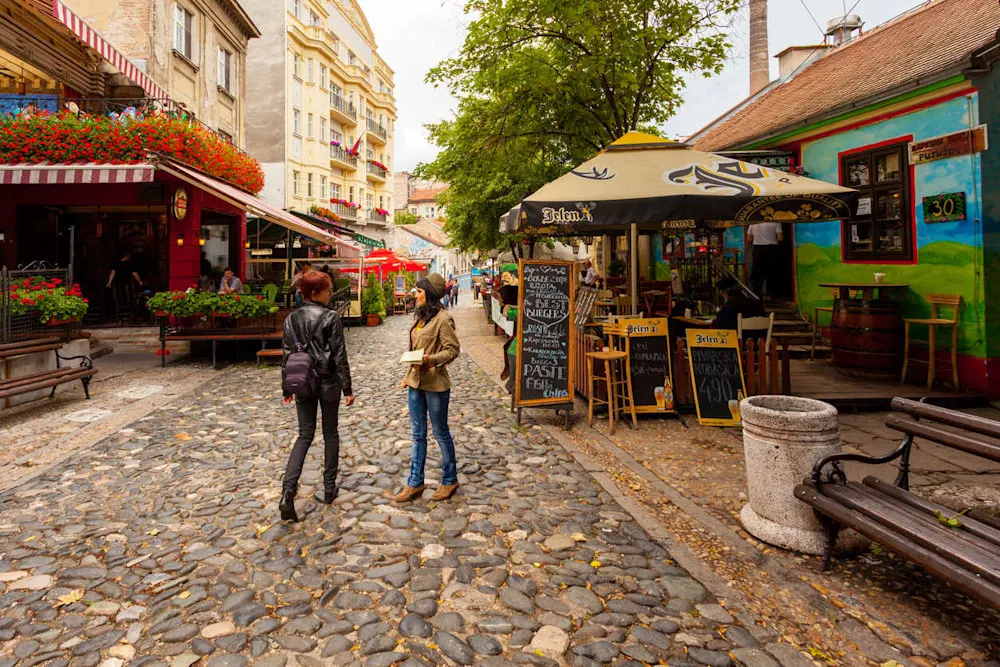
Often compared to Paris’s Montmartre, this bohemian street is lined with rustic cobblestones, traditional taverns, and live folk music. Spend an afternoon exploring art galleries, strolling along its uneven stone walkways, and sampling local delicacies. Try gibanica, a flaky pastry filled with cheese and eggs, while enjoying tambura and Balkan folk music at one of the many kafanas (traditional Serbian taverns) that host live performances.
3. Visit the Church of Saint Sava
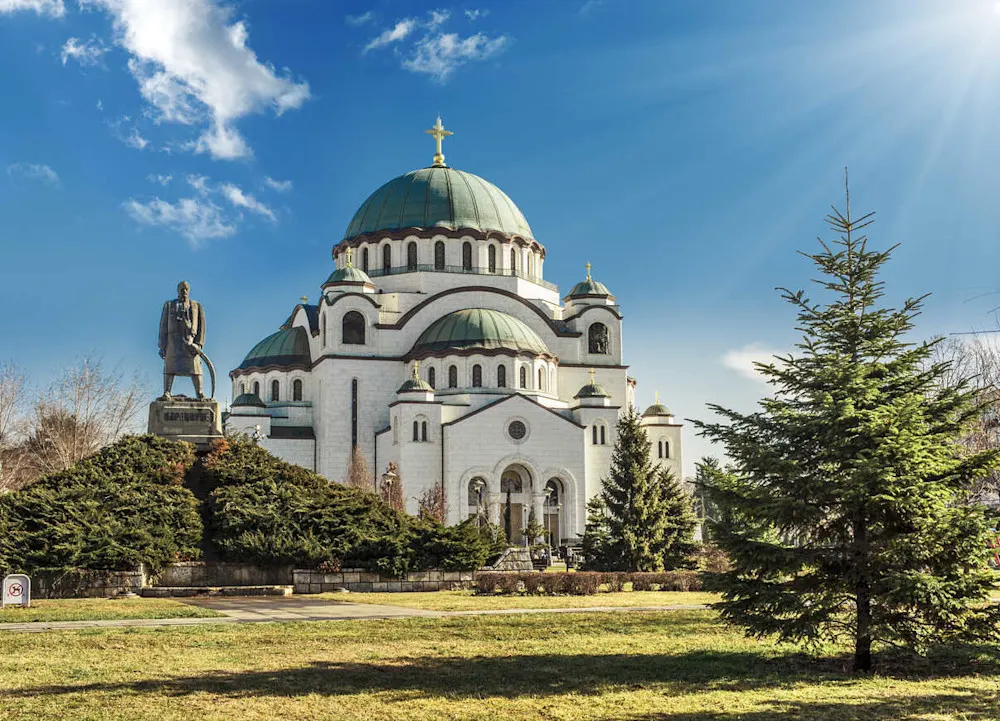
One of the largest Orthodox churches in the world, the Church of Saint Sava is more than a religious site—it’s a symbol of Serbian heritage and devotion. Its massive dome, towering 230 feet (70 meters) high, is visible across the city.
The church’s Hagia Sophia-inspired architecture incorporates arches, columns, and domes, blending classical Byzantine influences with Serbian Orthodox symbolism. Visitors can marvel at the grand interior or attend an Orthodox liturgy for a truly spiritual experience.
4. Explore the Nikola Tesla Museum
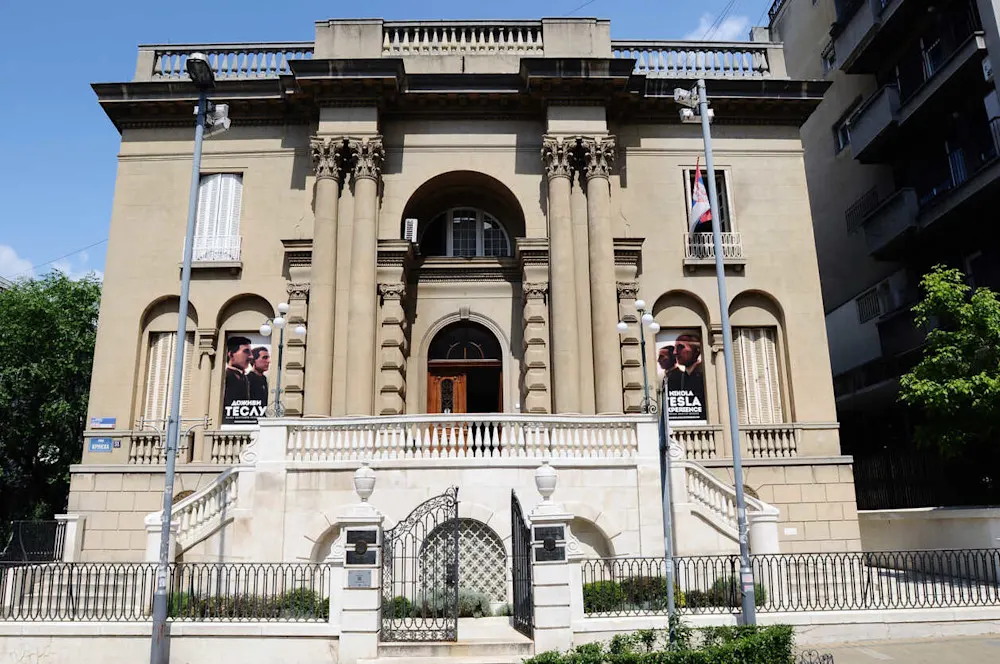
Located in central Belgrade, the Nikola Tesla Museum celebrates the life and work of one of the world’s most influential inventors. Tesla, best known for developing alternating current (AC), revolutionized technology and science.
The museum houses over 160,000 original documents, personal items, and models showcasing Tesla’s groundbreaking contributions to electrical engineering. Although he was born in Smiljan (now Croatia) and spent much of his life abroad, Tesla identified as Serbian due to his ethnic and cultural roots and is regarded as a national hero in Serbia. The museum offers guided tours in English, lasting about 45 minutes—check the museum website for availability.
5. Relax at Ada Ciganlija
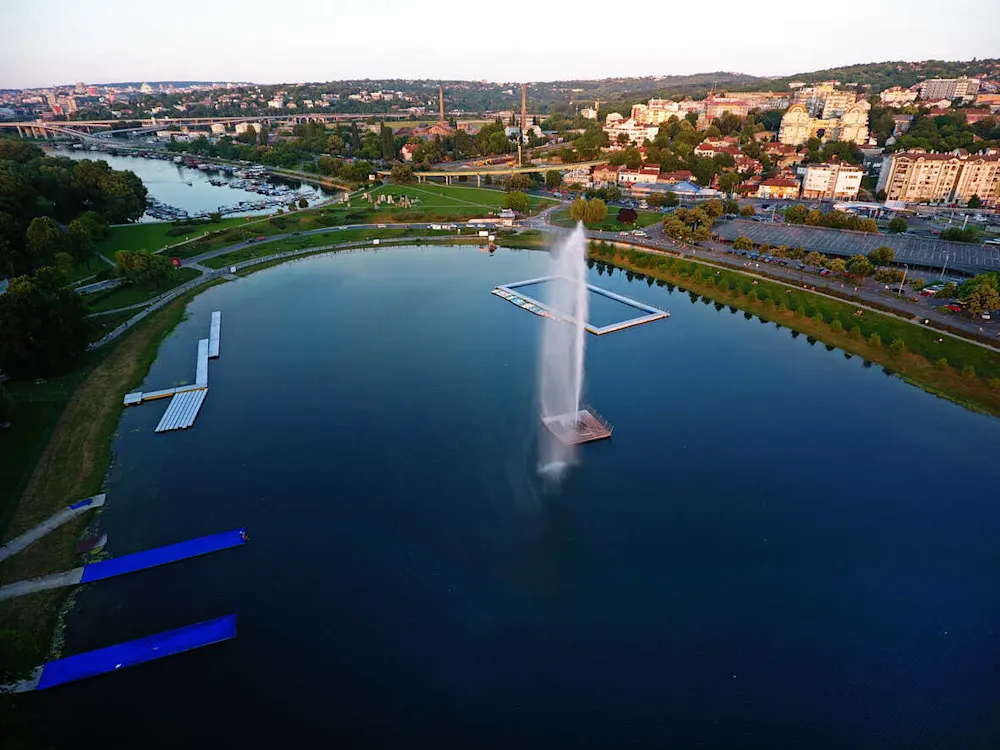
Known as “Belgrade’s Sea,” this river island on the Sava River is a popular leisure spot featuring scenic views, beaches, sports facilities, and cafés. Connected to the mainland by causeways, Ada Ciganlija spans approximately 1.6 square miles (4.1 square kilometers)—about the size of Central Park in New York.
A stroll through Ada Ciganlija brings visitors past vibrant coffee shops and numerous basketball, beach volleyball, and tennis courts. For thrill-seekers, the island also offers rock climbing and zip-lining facilities. From spring to fall, visitors can rent a bike and cycle the full 5-mile (8-kilometer) loop around the island.
6. Find a Bargain at the Zemun Market
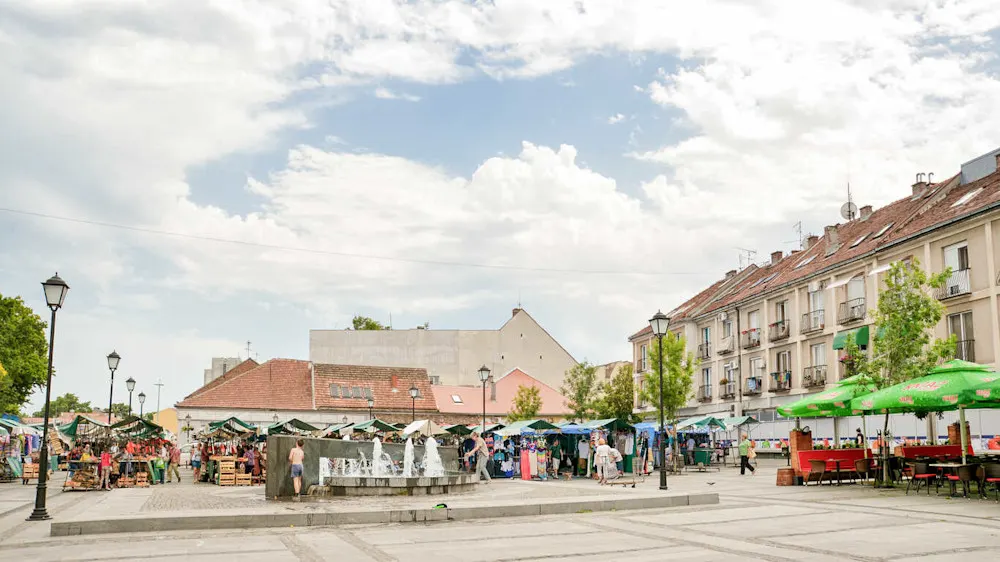
Once part of the Austro-Hungarian Empire, Zemun feels more like a quaint riverside town than part of bustling Belgrade. Its unique Austro-Hungarian architecture contrasts with the city’s modern brutalist buildings, making it one of the most charming districts to explore.
Take a scenic stroll along the Danube River at Zemun Quay, an area lined with cafés and restaurants—perfect for soaking in the river views. Climb to the historic Gardoš Tower for panoramic views of the city. A visit to the Zemun Market is a must, where visitors can experience a vibrant open-air market filled with local goods, fresh produce, and Serbian specialties, capturing the authentic spirit of this historic neighborhood.
Final Thoughts
If you’re searching for one of Eastern Europe’s hidden gems, Belgrade is a city that has it all—affordable living, a welcoming atmosphere, and a rich historical and cultural tapestry. It seamlessly blends East and West, past and present, offering a dynamic yet deeply rooted experience.
Whether exploring ancient fortresses, strolling through bohemian streets, or immersing yourself in the city’s legendary nightlife, Belgrade delivers an unforgettable journey that makes it a must-visit destination in Eastern Europe.
The World’s Best Retirement Havens for 2026
The World’s Best Retirement Havens for 2026
24 Countries Compared, Contrasted, Ranked, and Rated. You don’t have to be rich to enjoy a pampered retirement, you just need to know where to go. With our 35th Annual Global Retirement Index, our experts hand you a detailed roadmap. Details—and a Special Offer—Here

By submitting your email address, you will receive a free subscription to IL Postcards, The Untourist Daily and special offers from International Living and our affiliates. You can unsubscribe at any time, and we encourage you to read more about our Privacy Policy.
